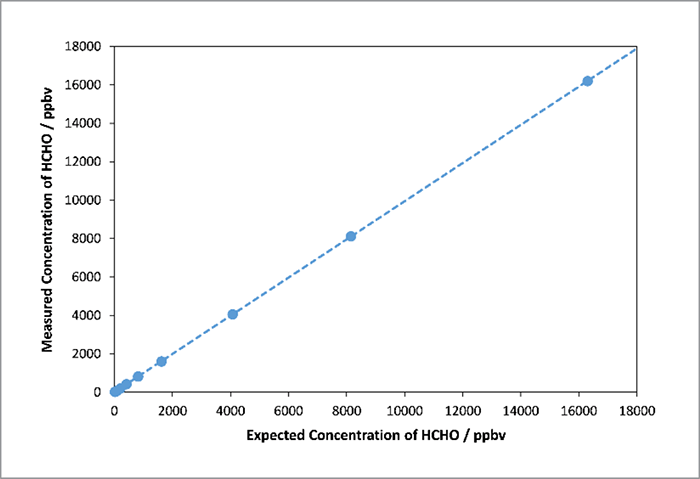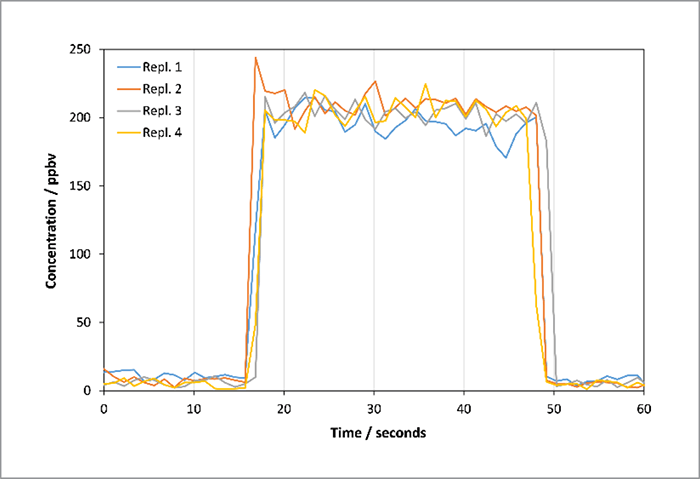The toxicity, carcinogenicity and ubiquity of formaldehyde necessitates detection at trace levels across diverse applications, including pharmaceutical testing, automotive emissions, and ambient and indoor air quality. Formaldehyde is, however, difficult to analyse to trace levels using gas chromatography (GC) and liquid chromatography (LC); GC and LC usually require sampling of large gas volumes to achieve low detection limits, followed by derivatization to enable analysis of this highly polar, reactive compound. SIFT-MS revolutionizes formaldehyde sampling and analysis by applying very soft chemical ionisation. SIFT-MS eliminates chromatography and directly analyses formaldehyde in air to sub-part-per-billion concentrations (ppbv; by volume) within seconds, from only a few millilitres of air. This yields very high sample throughputs in the laboratory, and enables continuous monitoring – with a time resolution of a few seconds – in process applications. The formaldehyde data shown here were obtained using a Syft Technologies Voice200ultra SIFT-MS instrument, integrated with a GERSTEL Multipurpose Sampler (MPS; GERSTEL, Mülheim an der Ruhr, Germany). Sampling from Tedlar gas sample bags (SKC, Eighty-Four, PA, USA) was achieved using the GERSTEL sample bag analysis accessory.


SIFT-MS has a linearity range that typically extends six orders of magnitude, with detection limits in the low part-per-trillion (pptv) concentration range. Figure 1 shows linear detection of formaldehyde from very low ppbv to mid-part-per-million (ppmv) concentrations, without requiring any preconcentration or sample dilution. This concentration range covers the needs of most applications in the pharma, automotive and environmental industries. Formaldehyde analysis using SIFT-MS is highly repeatable. Figure 2 shows four replicate injections of a 200-ppbv formaldehyde gas standard taken from a Tedlar sampling bag. The mean concentration reading was 203 ppbv with an RSD of 2.6 percent. Direct analysis of formaldehyde in air is straightforward using SIFT-MS – by eliminating chromatography, 25-fold sample-throughput enhancements can be achieved.





